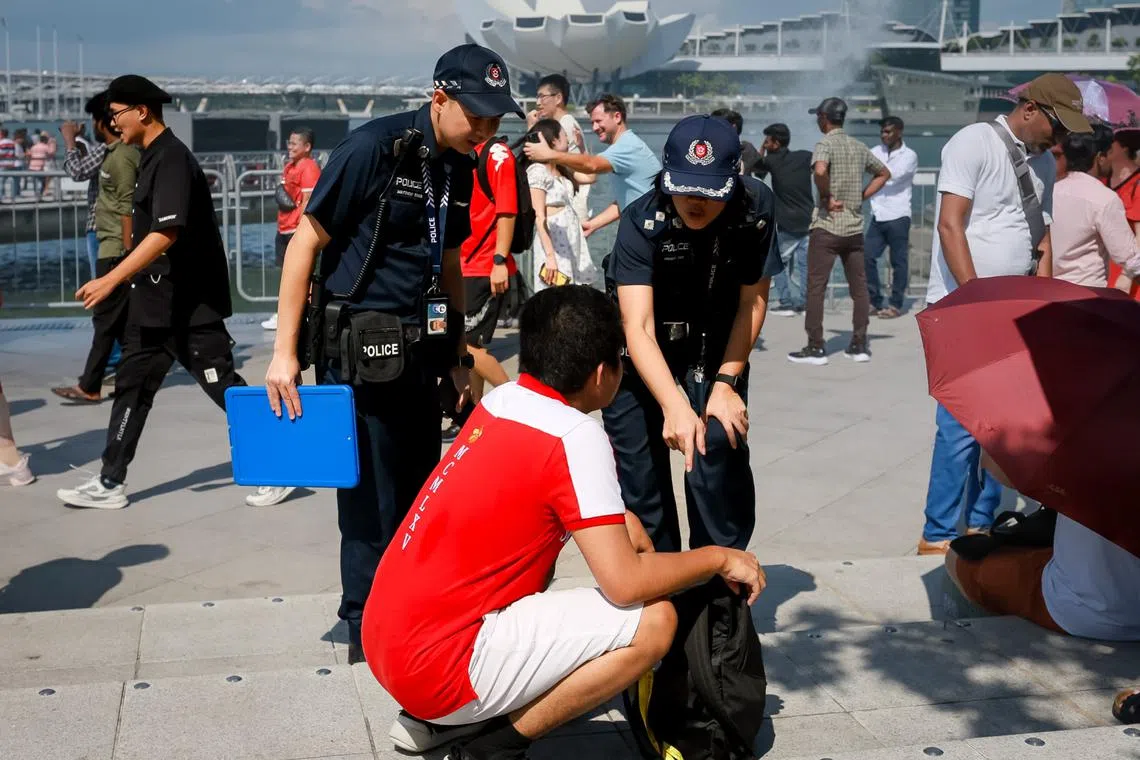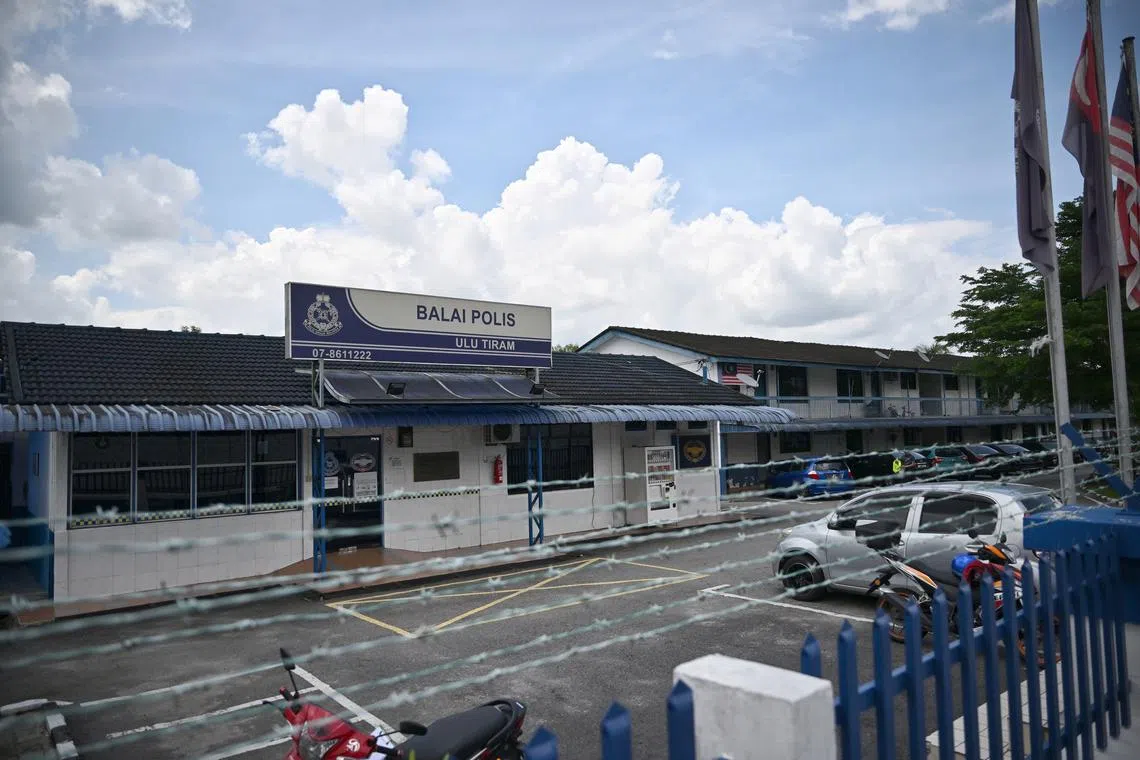Self-radicalisation a key threat to Singapore: 7 takeaways from ISD’s annual terrorism report
Sign up now: Get ST's newsletters delivered to your inbox

ISD said the terrorism threat to Singapore has risen since the Hamas attack on Israel on Oct 7, 2023.
ST PHOTO: GAVIN FOO
Follow topic:
SINGAPORE – In its annual report on terrorism released on July 25,
Here are seven key takeaways from the report.
1. Terror threat rose after Oct 7, 2023, Hamas attack
ISD said the terrorism threat to Singapore has risen since the Hamas attack on Israel on Oct 7, 2023,
Israel responded to the attack with air strikes and an invasion of Gaza. The outbreak of hostilities ignited emotive responses worldwide, including acts of violence and calls by terrorist groups to further their agenda.
Hamas leaders have called for attacks against the interests of Israel, the United States and their allies, ISD said, noting that terrorist propaganda containing such calls have made the rounds on social media in South-east Asia.
In Singapore, there has been an uptick in anti-Singapore sentiments on social media among regional netizens who perceive the Republic to be pro-Israel, ISD said.
There have been posts online urging attacks against Singapore using “bombs” and “rockets” and calling for the country to be “destroyed” and “wiped out”.
Singapore’s interests may also be caught in the crossfire if state actors and their proxies engage in attacks against adversaries.
2. Islamist terrorism remains at forefront of global terror threat landscape
In particular, militant group ISIS remains a persistent threat, said ISD.
Despite leadership attrition and financial setbacks, ISIS and its affiliates retain their capacity to conduct terrorist attacks, both in and beyond conflict zones.
ISIS is behind the protracted insurgency in Iraq and Syria. Among its affiliates, ISIS-Khorasan is of particular concern, given its track record of executing attacks in Asia and beyond.
Al-Qaeda continues to pose a threat, said ISD, adding that the terrorist group remains close to the Taliban and harbours global ambitions.
3. ISIS remains primary threat actor in South-east Asia
The region continues to see ISIS-linked or inspired attacks and foiled plots.
On May 17, a radicalised man, likely motivated by ISIS’ violent ideology, attacked a police station in Ulu Tiram, Johor, killing two police officers and injuring a third.
From May to June, the regional authorities arrested at least 15 pro-ISIS supporters, some of whom had allegedly made threats against Malaysia’s king, prime minister and senior police officers.

On May 17, a radicalised man, likely motivated by ISIS’ violent ideology, attacked a police station in Ulu Tiram, Johor, killing two police officers and injuring a third.
PHOTO: ST FILE
4. Self-radicalisation is primary threat driver in Singapore
On the domestic front, 52 self-radicalised individuals, comprising 40 Singaporeans and 12 foreigners, have been issued Internal Security Act (ISA) orders since 2015.
Youth radicalisation is a particular concern,
5. ISD has dealt with three cases of self-radicalisation since July 2023
Two of the cases were boys, aged 14 and 16, and the third was a 33-year-old woman. They were issued restriction orders under the ISA.
The Israel-Hamas conflict triggered the radicalisation of the 14-year-old and 33-year-old. The 16-year-old was radicalised by far-right extremist ideologies.
The cases are a reminder that anyone is susceptible to radicalisation, regardless of age, gender, religion or profession, ISD said.
6. Public vigilance key to Singapore’s defence against terrorism
ISD said the authorities will not always be able to neutralise plots before they are actualised, or identify radicalised individuals before they act.
“It is critical that the public remains strongly vigilant to the possibility of a terrorist attack against the country, and that such an attack may be successful,” it added.
7. What’s your role?
Anyone with information on or suspicions about terrorism-related activities, or people who may be radicalised, should contact the ISD counter-terrorism hotline on 1800-2626-473 (1800-2626-ISD).
Signs of possible radicalisation include:
Frequently surfing radical websites
Posting or sharing extremist views on social media platforms
Sharing extremist views with friends and relatives
Making remarks that promote ill will or hatred towards people of other races, religions or communities
Expressing intent to participate in acts of violence overseas or in Singapore
Inciting others to take part in acts of violence
As part of the SGSecure movement against security threats, the public can learn to prepare for the eventuality of a terrorist attack, so as to respond to it well and mitigate possible consequences such as racial and religious conflict.


